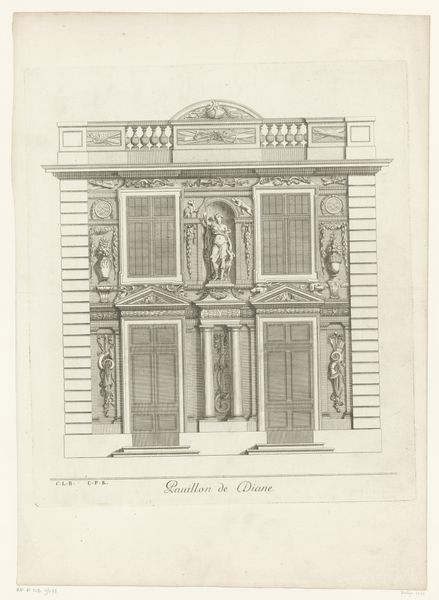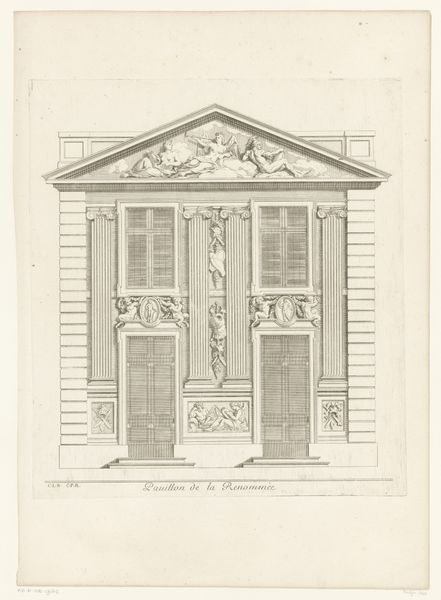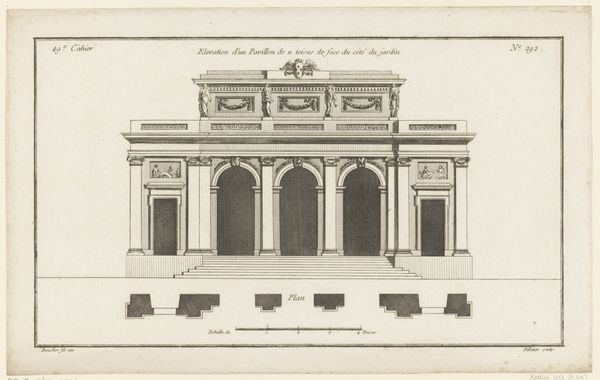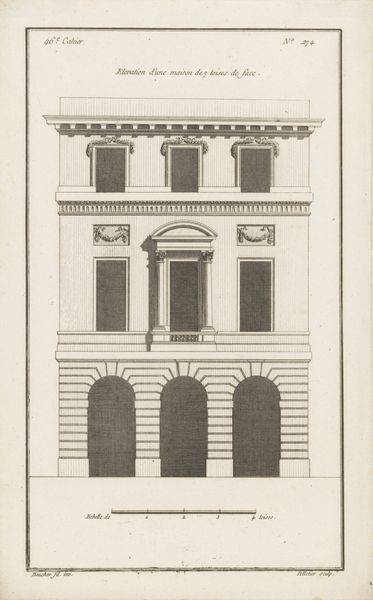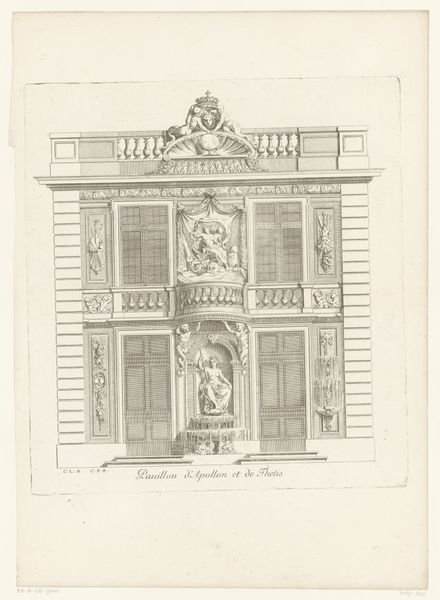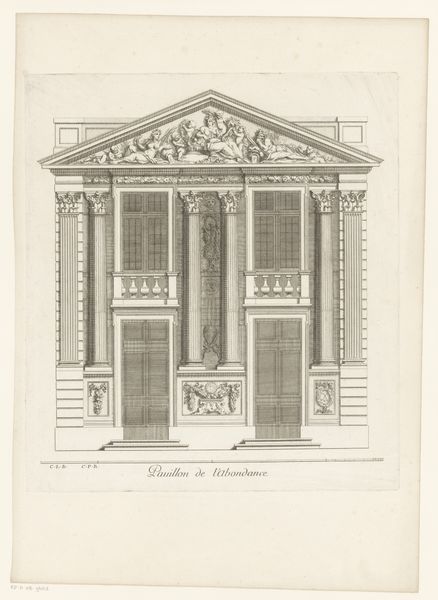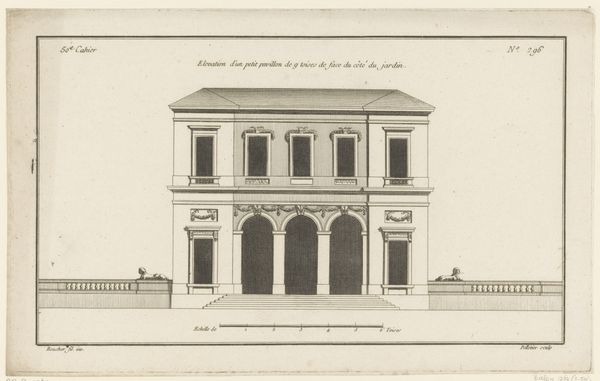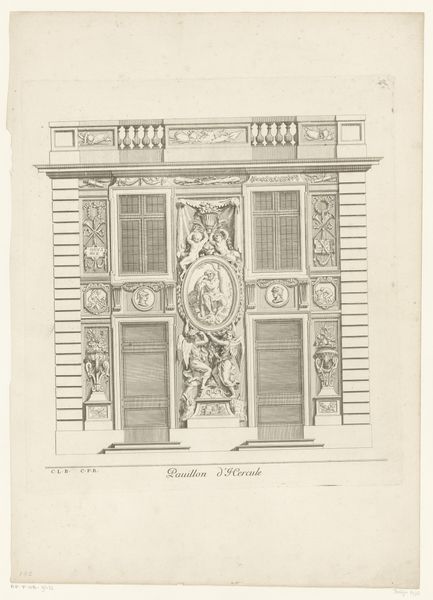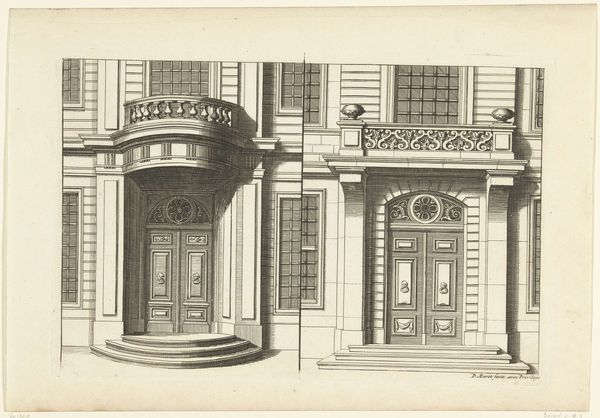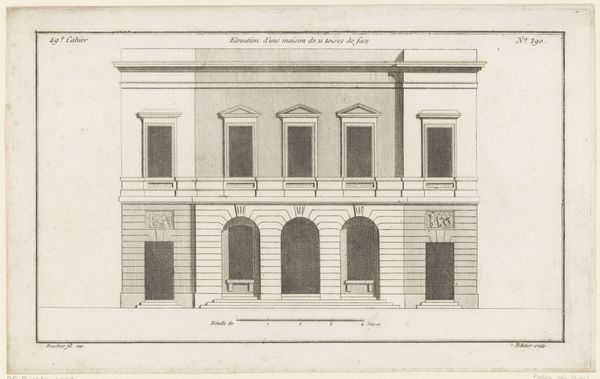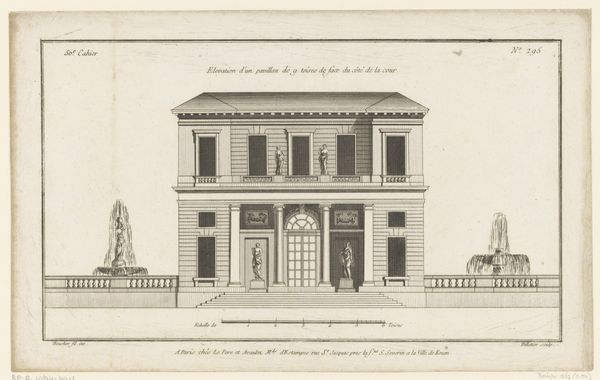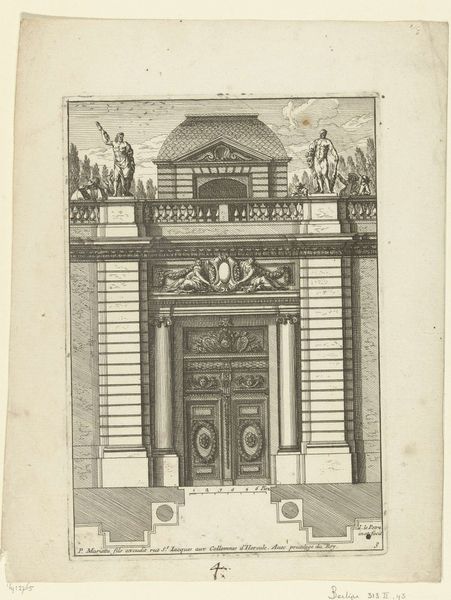
drawing, print, etching, architecture
#
drawing
#
baroque
# print
#
etching
#
etching
#
geometric
#
history-painting
#
architecture
Dimensions: height 378 mm, width 348 mm
Copyright: Rijks Museum: Open Domain
Editor: Here we have Louis de Châtillon’s “Paviljoen van Jupiter,” an etching from the late 17th century held in the Rijksmuseum. I'm struck by how regimented it is; the repeated vertical lines almost flatten the building. What do you see in this print? Curator: As a materialist, I see a carefully constructed image intended to convey the opulence of a structure dedicated to Jupiter, but I'm more interested in the "how." Look closely at the etching technique; consider the labor involved in creating these precise lines. Etchings allowed for relatively mass production. For whom was this print intended, and what economic relationships underpinned its creation and distribution? Editor: So, you're less interested in the depiction of the Pavilion itself, and more in what the etching tells us about 17th-century society? Curator: Precisely. Consider the paper itself – its origin, the labor required to produce it, its cost. The consumption of images like this was not simply an aesthetic experience; it was deeply embedded in systems of production, trade, and social hierarchies. Who had access to it? Who benefited from its creation? These are material questions. Editor: I never really considered the economic side of art from this period so directly. It makes me wonder if this print was primarily about showing off wealth. Curator: Exactly. The marble effect achieved through etching imitates the real material’s preciousness and scarcity. The print becomes a commodity that, while cheaper than marble, still participates in and propagates the social meanings associated with it. Editor: That’s a really interesting perspective. I’m so used to thinking about the image first, but looking at the process and materials provides such a richer understanding. Curator: Indeed. By examining the materiality and means of production, we can unearth hidden narratives and challenge established notions of art and value.
Comments
No comments
Be the first to comment and join the conversation on the ultimate creative platform.

